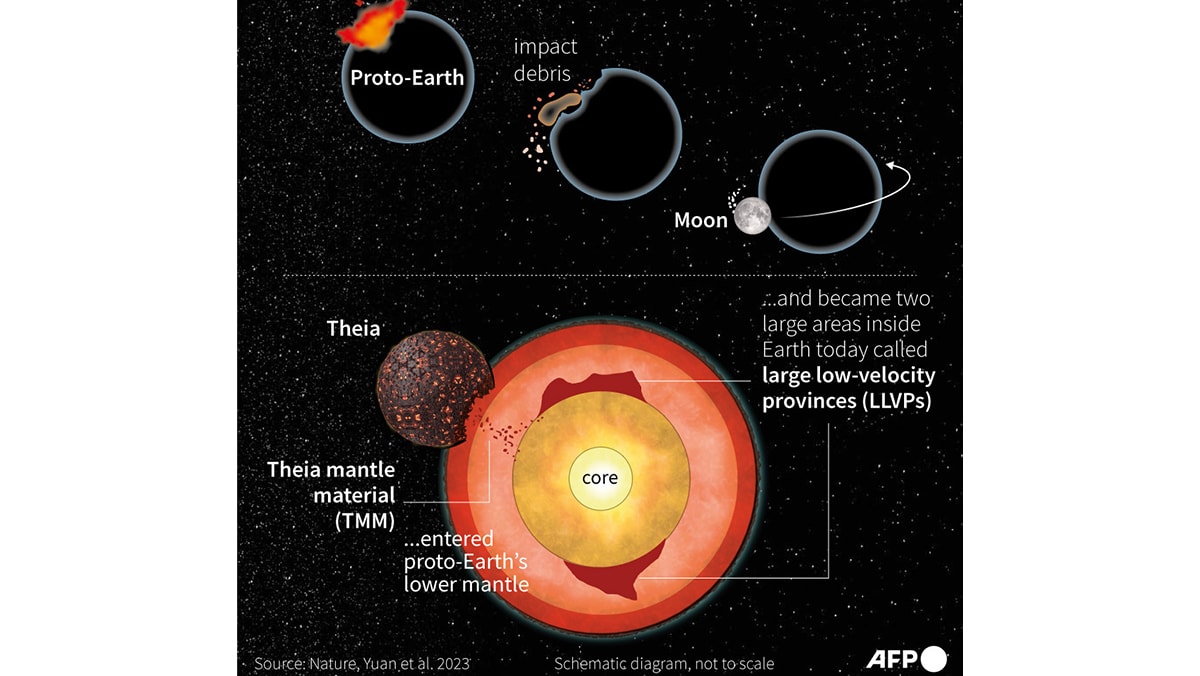Mantener a los primeros humanos frescos e hidratados


Los investigadores sugieren que la evolución del cabello rizado en los primeros humanos fue un rasgo adaptativo crucial en el África ecuatorial, que brindaba una protección eficaz contra el calor del sol y minimizaba la necesidad de sudar. Este mecanismo de enfriamiento pasivo probablemente permitió el crecimiento del cerebro al conservar agua y reducir el calor. El estudio proporciona nuevos conocimientos sobre el papel evolutivo de la textura del cabello.
El cabello bien rizado protegía a los primeros humanos del calor radiante del sol, lo que permitía que sus cerebros crecieran a tamaños comparables a los de los humanos modernos.
El cabello rizado hace más que verse bien: puede explicar cómo los primeros humanos se mantuvieron frescos mientras conservaban el agua, según investigadores que estudiaron el papel que juegan las texturas del cabello humano en la regulación de la temperatura corporal. Los hallazgos podrían arrojar luz sobre una adaptación evolutiva que permitió que el cerebro humano creciera a tamaños modernos.
«Los humanos evolucionaron en África ecuatorial, donde el sol está sobre la cabeza la mayor parte del día, año tras año», dijo Nina Jablonski, profesora de antropología en la Universidad Evan Pugh en Penn State. “Aquí, el cuero cabelludo y la parte superior de la cabeza reciben niveles mucho más constantes de radiación solar intensa en forma de calor. Queríamos entender cómo afectaba esto a la evolución de nuestro cabello. Descubrimos que el cabello muy rizado permite que los humanos se mantengan frescos y, de hecho, conserven agua”.

Un maniquí térmico con pelucas de cabello humano bien rizado (izquierda) y liso (derecha). El maniquí utiliza energía eléctrica para simular el calor corporal y permite a los científicos estudiar la transferencia de calor entre la piel humana y el medio ambiente. Un nuevo estudio que examina el papel que juegan las texturas del cabello humano en la regulación de la temperatura corporal encuentra que el cabello muy rizado ofrece la mejor protección contra el calor radiante del sol, minimizando la necesidad de sudar para refrescarse. Crédito: George Havenith, Universidad de Loughborough
Los investigadores utilizaron un maniquí térmico, un modelo con forma humana que usa energía eléctrica para simular el calor corporal y permite a los científicos estudiar la transferencia de calor entre la piel humana y el medio ambiente, y pelucas de cabello humano para examinar cómo las diversas texturas del cabello afectan el calor. ganancia de la energía solar. radiación. Los científicos programaron el maniquí para mantener una temperatura superficial constante de 95 grados.[{» attribute=»»>Fahrenheit (35 degrees Celsius), similar to the average surface temperature of skin, and set it in a climate-controlled wind tunnel.
The team took base measurements of body heat loss by monitoring the amount of electricity required by the manikin to maintain a constant temperature. Then they shined lamps on the manikin’s head to mimic solar radiation under four scalp hair conditions — none, straight, moderately curled, and tightly curled.
The scientists calculated the difference in total heat loss between the lamp measurements and the base measurements to determine the influx of solar radiation to the head, explained George Havenith, director of the Environmental Ergonomics Research Centre at Loughborough University, U.K., who led the manikin experiments. They also calculated heat loss at different windspeeds and after wetting the scalp to simulate sweating. They ran their results through a model to study how the diverse hair textures would affect heat gain in 86-degree Fahrenheit (30 degrees Celsius) heat and 60% relative humidity, like environments in equatorial Africa.
The researchers found that all hair reduced solar radiation to the scalp, but tightly curled hair provided the best protection from the sun’s radiative heat while minimizing the need to sweat to stay cool. They reported their findings on June 6, 2023, in the Proceedings of the National Academy of Sciences.

A graphic showing how scientists used a thermal manikin and human hair wigs to measure heat transfer from the scalp. Credit: Melisa Morales Garcia
“Walking upright is the setup and brain growth is the payoff of scalp hair,” said Tina Lasisi, who conducted the study as part of her doctoral dissertation at Penn State. Lasisi will start as an assistant professor of anthropology at the University of Michigan in the fall.
As early humans evolved to walk upright in equatorial Africa, the tops of their heads increasingly took the brunt of solar radiation, explained Lasisi. The brain is sensitive to heat, and it generates heat, especially the larger it grows. Too much heat can lead to dangerous conditions like heat stroke. As humans lost much of their body hair, they developed efficient sweat glands to keep cool, but sweating comes at a cost in lost water and electrolytes. Scalp hair likely evolved as a way to reduce the amount of heat gain from solar radiation, thereby keeping humans cool without the body having to expend extra resources, said Lasisi.
“Around 2 million years ago we see Homo erectus, which had the same physical build as us but a smaller brain size,” she said. “And by 1 million years ago, we’re basically at modern-day brain sizes, give or take. Something released a physical constraint that allowed our brains to grow. We think scalp hair provided a passive mechanism to reduce the amount of heat gained from solar radiation that our sweat glands couldn’t.”
The multidisciplinary research provides important preliminary results for bettering our understanding of how human hair evolved without putting humans in potentially dangerous situations, said Jablonski.
The study also shows that evolutionary anthropologists have an extra tool in the thermal manikin – normally used for testing the functionality of protective clothing – for quantifying human data that is otherwise very difficult to capture, added Havenith.
“The work that’s been done on skin color and how melanin protects us from solar radiation can shape some of the decisions that a person makes in terms of the amount of sunscreen needed in certain environments,” said Lasisi. “I imagine that similar decision-making can occur with hair. When you think about the military or different athletes exercising in diverse environments, our findings give you a moment to reflect and think: is this hairstyle going to make me overheat more easily? Is this the way that I should optimally wear my hair?”
Reference: “Human scalp hair as a thermoregulatory adaptation” by Tina Lasisi, James W. Smallcombe, W. Larry Kenney, Mark D. Shriver, Benjamin Zydney, Nina G. Jablonski and George Havenith, 6 June 2023, Proceedings of the National Academy of Sciences.
DOI: 10.1073/pnas.2301760120
Also contributing to the research were James Smallcombe, Loughborough University and the University of Australia; and from Penn State Larry Kenney, professor of physiology, kinesiology and Marie Underhill Noll Chair in Human Performance; Mark Shriver, professor of anthropology; and Benjamin Zydney, previously an undergraduate research assistant and now a Penn State alum.
The National Science Foundation and the Wenner-Gren Foundation supported this work.

/cloudfront-ap-southeast-2.images.arcpublishing.com/nzme/SQ2NCPSGPW2GUDBMXPYX4JDAXY.jpg)



